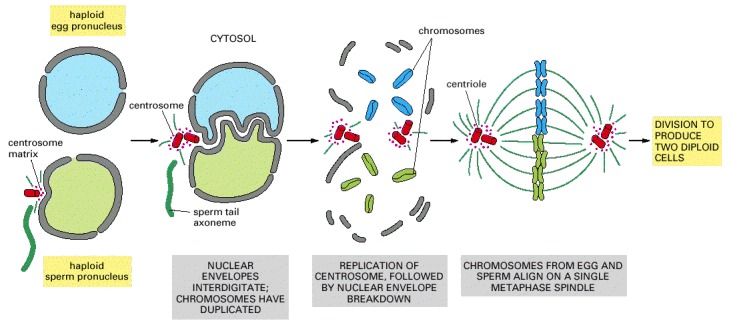It was an interesting discussion about the place of Luther in European and in particular German history, and his continuing influence that prompted me to write, for whilst the conversation was informative, offering perhaps a different perspective than you would be given by an O-level syllabus, there appeared to be a contradiction in it. You may want to listen, or watch for yourself, to judge the matter more carefully
Martin Luther: The Man Who Changed The World from The Rest is History where Tom and Dominic (who?) talk about the man whom we cannot forget.
There is a reference somewhere in the middle of the discussion to the authorities of the age. These authorities are not to be questioned, not because of the civil or political power they hold, though some of them did, and as we shall see do so today, but because they were in the know. They were the cognisant (cognizenci) of their day. Coco does somethings think they are may be more properly described as the gnostics of their day. These people were able to influence the responses of the authorities and the masses to the sometimes new ideas proposed by those who really were in the know, and who had by careful research or experiment been able to demonstrate the veracity of the ideas. A reference may be made to the Copernican revolution; we must not lose sight of this that today we have a different understanding of the revolutions of the planets than any of the three sides of the debate. The science of one year may become the dust of the next.
There was a sense in which the speakers sought to suggest that the day of the cognisant had passed and we now lived in an age where all ideas and thoughts were properly tested for their truth, and that this approach was something introduced by the Renaissance, and built upon by Luther – every man must be free to understand the Word of God by his own conscience: My conscience is captive to the word of God! To go against conscience is neither right nor safe. I therefore cannot, and I will not recant! Here I stand. I can do other. But then we had a reference to the epidemiologist. Apparently in recent years we believed them. They became the authorities who would tell us what to think and how to behave. Today the authority behind them is making a power grab in order to be able to control not only what we think and how we behave, but what we can do and where we can go. Should they succeed then all that is required is a word from them, and everyone must fall into line.
Are we lazy? Is that why we do not question the pronouncements of the cognisant? Are they really cognisant, or are such as these pursuing their own agenda? Darwin when he proposed his origin of the species (note not the origin of life) provided clear tests for his hypothesis. The discovery of DNA finally showed that the hypothesis had failed the tests (though it should have been obvious before then), but still the so-called cognisant continue to speak as if it were valid, and even try to extend it beyond the limits Darwin himself imposed. They are pursuing their own agenda, and those who seek to question them, as they tried to do to Galileo and Luther are shut down.
Are we forgetful? The cognisant of old have often had to give up their ideas in the light of evidence. Those who were wise recognised the limitations of their ideas and were careful to express them in such a way that the limits were clear. Boyle’s Law is universal, but read it carefully before you criticise it where it appears to fail.
What really stood in the way of both Luther and Galileo was not true knowledge, but a wisdom of this world. It is a wisdom which leads the fool to say: There is no god. Paul speaks to the Corinthians about this in quite clear terms:
For it is written: I will destroy the wisdom of the wise, And bring to nothing the understanding of the prudent. Where is the wise? Where is the scribe? Where is the disputer of this age? Has not God made foolish the wisdom of this world? For since, in the wisdom of God, the world through wisdom did not know God, it pleased God through the foolishness of the message preached to save those who believe.1
Now some would like to suggest that this means that all the wisdom of this world is worthless, but let us not so misunderstand what Paul is saying. He makes the context of his remarks quite clear: the world through wisdom did not know God. Paul knew very well that what may be known of God is made known in men, for God has shown it to them. For since the creation of the world his invisible attributes are clearly seen, being understood by the things that are made, even his eternal power and Godhead, so that they are without excuse, as he wrote to the Romans. Paul is not saying that we should not take notice of the world around us, nor is he saying we should not try to understand it. It is in understanding the world correctly that we see the witness that God has left in the world to his invisible attributes as Paul says here.
Paul goes on to say something similar to that which he said to the Corinthians: because, although they knew God, they did not glorify him as God, nor were thankful, but became futile in their thoughts, and their foolish hearts were darkened. Professing to be wise, they became fools, and changed the glory of the incorruptible God into an image made like corruptible man – and birds and four-footed animals and creeping things.2
They thought they knew something. They thought they were wise. But the condition of their heart meant that they used their knowledge to invent a wisdom which would led them eventually to say: There is no God. On the way to that point they invent gods for themselves, which are clearly false gods. They cannot hear, they cannot speak, they cannot move themselves but have to be carried on carts. Some see the foolishness of this behaviour but cannot find a satisfactory intellectual argument to support the statement that there is no God until they exalt the wisdom of man, his power of reasoning, his logical mind above the evidence that is around them, and they invent stories to explain it away. Stories which cannot of course be proven to be false for no-one was around to see the fake story unfold.
The wisdom of the world of which Paul speaks here then is that false wisdom which says in its heart that man is self-dependent, that he has no need of a god (other than the false one he makes in his own image but which he often will not acknowledge that he has made). Wisdom is intended to lead us to God, but man in his wisdom corrupts it to turn himself away from God. It is this corrupted wisdom, which Paul describes as the wisdom of this world, of which he speaks here. Paul is fully aware of the proverb which says: The fear of the Lord is the beginning of wisdom, and the knowledge of the Holy One is understanding
Wisdom in itself is to be valued, to be embraced, when it is not corrupt. So Paul in writing to the Corinthians that he will not use the sophistry (another word for wisdom, which we often use in a pejorative sense when false arguments are used) to persuade them to become believers, but will simply speak the truth to them. And this is the truth that Jesus Christ was crucified. This is a fact which runs counter to all the wisdom of this world, that a god should allow the mortals to crucify him (remember that crucifixion was reserved for the lowest of the low) was foolishness to the Greek and Roman world. So he explains it to the Corinthians:
I delivered to you first of all that which I also received: that Christ died for our sins according to the Scriptures, and that he was buried, and that he rose again the third day according to the Scriptures, and that he was seen by Cephas (Simon Peter), then by the twelve. After that he was seen by over five hundred brethren at once, of whom the greater part remain to the present, but some have fallen asleep. After that he was seen by James, then by all the apostles. Then last of all he was seen by me also, as by one born out of due time.3
Let us not then be deceived by the foolishness of the sophistry of this world and say in our hearts: There is no God. Rather let us believe the gospel which has been delivered to us that Chris died for our sins. Let us not be wise in our own minds, but receive the wisdom which comes from the fear of the Lord.
But let us also not forget that the study of this world is intended to lead us to God, not away from him for as David said:
The heavens declare the glory of God; and the expanse shows his handiwork.
Day unto day utters speech, and night unto night reveals knowledge.
There is no speech nor language where their voice is not heard.
Their sound has gone out through all the earth, and their words to the end of the world.4
1 1 Corinthian 1:14-2:16
14 I thank God that I baptized none of you except Crispus and Gaius, 15 lest anyone should say that I had baptized in my own name. 16 Yes, I also baptized the household of Stephanas. Besides, I do not know whether I baptized any other. 17 For Christ did not send me to baptize, but to preach the gospel, not with wisdom of words, lest the cross of Christ should be made of no effect.
Christ the Power and Wisdom of God
18 For the message of the cross is foolishness to those who are perishing, but to us who are being saved it is the power of God. 19 For it is written:
I will destroy the wisdom of the wise,
And bring to nothing the understanding of the prudent.
20 Where is the wise? Where is the scribe? Where is the disputer of this age? Has not God made foolish the wisdom of this world? 21 For since, in the wisdom of God, the world through wisdom did not know God, it pleased God through the foolishness of the message preached to save those who believe. 22 For Jews request a sign, and Greeks seek after wisdom; 23 but we preach Christ crucified, to the Jews a stumbling block and to the Greeks foolishness, 24 but to those who are called, both Jews and Greeks, Christ the power of God and the wisdom of God. 25 Because the foolishness of God is wiser than men, and the weakness of God is stronger than men.
Glory Only in the Lord
26 For you see your calling, brethren, that not many wise according to the flesh, not many mighty, not many noble, are called. 27 But God has chosen the foolish things of the world to put to shame the wise, and God has chosen the weak things of the world to put to shame the things which are mighty; 28 and the base things of the world and the things which are despised God has chosen, and the things which are not, to bring to nothing the things that are, 29 that no flesh should glory in his presence. 30 But of him you are in Christ Jesus, who became for us wisdom from God—and righteousness and sanctification and redemption— 31 that, as it is written, He who glories, let him glory in the Lord.
2 And I, brethren, when I came to you, did not come with excellence of speech or of wisdom declaring to you the testimony of God. 2 For I determined not to know anything among you except Jesus Christ and him crucified. 3 I was with you in weakness, in fear, and in much trembling. 4 And my speech and my preaching were not with persuasive words of human wisdom, but in demonstration of the Spirit and of power, 5 that your faith should not be in the wisdom of men but in the power of God.
Spiritual Wisdom
6 However, we speak wisdom among those who are mature, yet not the wisdom of this age, nor of the rulers of this age, who are coming to nothing. 7 But we speak the wisdom of God in a mystery, the hidden wisdom which God ordained before the ages for our glory, 8 which none of the rulers of this age knew; for had they known, they would not have crucified the Lord of glory.
9 But as it is written:
Eye has not seen, nor ear heard,
Nor have entered into the heart of man
The things which God has prepared for those who love Him.
10 But God has revealed them to us through his Spirit. For the Spirit searches all things, yes, the deep things of God. 11 For what man knows the things of a man except the spirit of the man which is in him? Even so no one knows the things of God except the Spirit of God. 12 Now we have received, not the spirit of the world, but the Spirit who is from God, that we might know the things that have been freely given to us by God.
13 These things we also speak, not in words which man’s wisdom teaches but which the Holy Spirit teaches, comparing spiritual things with spiritual. 14 But the natural man does not receive the things of the Spirit of God, for they are foolishness to him; nor can he know them, because they are spiritually discerned. 15 But he who is spiritual judges all things, yet he himself is rightly judged by no one. 16 For who has known the mind of the Lord that he may instruct him? But we have the mind of Christ.
2 Romans 1
3 1 Corinthians 15
4 Psalm 19







